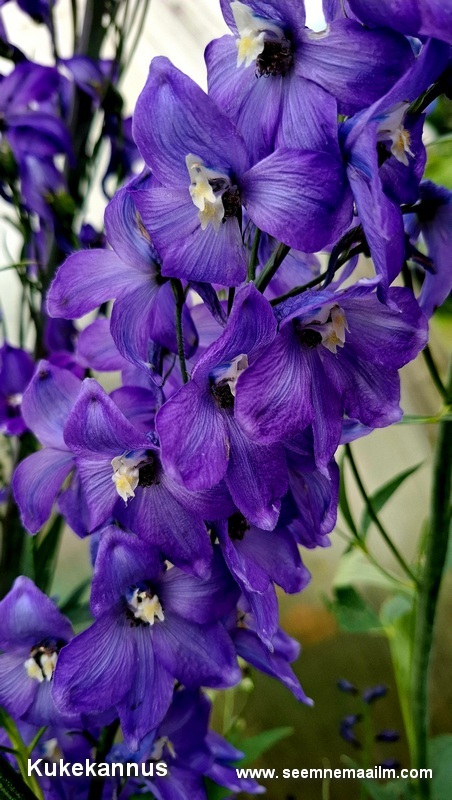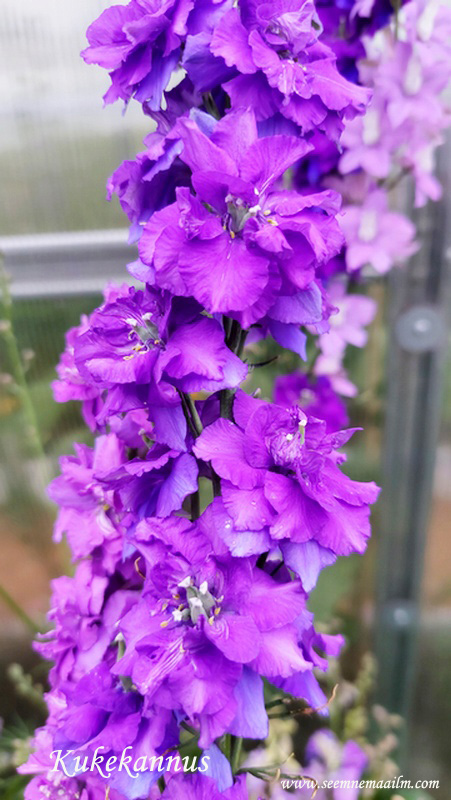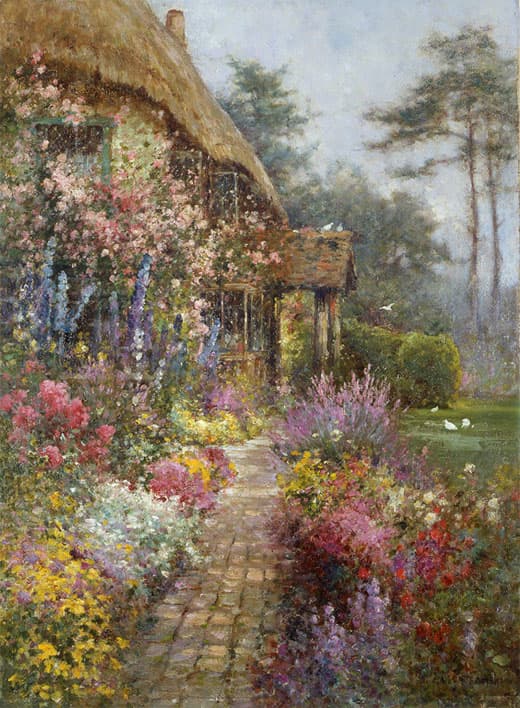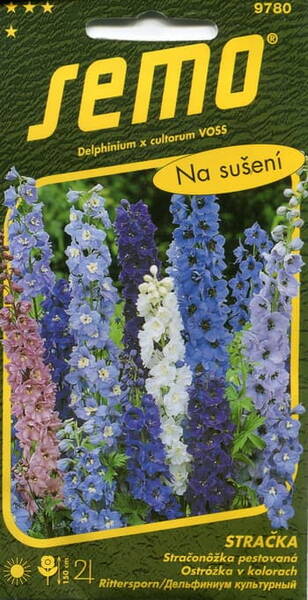Perennial. A popular plant 150-180 cm high, on which 8-10 stem-carrier inflorescences develop. Filled flowers are collected in giant inflorescences 70-80 cm long.
Blooms in June-July. After the main flowering, remove the carriers of the inflorescences to induce a second wave of flowering in August-September.
In a group and individually, cut flowers stay fresh for a long time in a vase.




Alfred de Breanski.
Delphiniums require a lot of attention. In the spring, before planting, carefully prepare the soil. Add not only organic amendments but also mineral fertilizers with microelements and ash. In the summer, regularly feed with a mullein infusion and a complete mineral fertilizer with microelements. Foliar feeding is beneficial during the budding period. Regularly mulch the soil. Tie growing stems to a support. Remove faded shoots (if seeds are not desired). Watering is necessary in dry weather.
* Propagation is by dividing the bushes, cuttings, and sowing seeds. Cuttings are taken from the thinnest shoots (before a cavity forms in the stem), 8-10 cm long. They are rooted and grown in the shade under plastic. (When propagating varietal delphiniums by seed, varietal purity ranges from 90 to 60%). Seeds are sown in April in a greenhouse. In early May, the seedlings are planted in their permanent location. Plants that bloom in the year of sowing live only 2-3 years. Sowing can be done in January-February, burying the seedling boxes in snow.
In early spring, the seedlings are picked and transplanted to a permanent location at the stage of 2-3 leaves.
• Diseases: spotting, powdery mildew, bacterial rot, mosaic, nematodosis.
• Pests: spider mites, delphinium flies, onion flies, slugs.
Delphiniums can be used in a variety of flower arrangements. They look especially beautiful in pure cultivar groups against walls or near shrubs. They are also suitable for mixed group plantings. They hold up well in water and make exceptionally lush bouquets.
ALL PARTS OF THE PLANT ARE POISONOUS ! AVOID GETTING THE JUICE ON WOUNDS !












